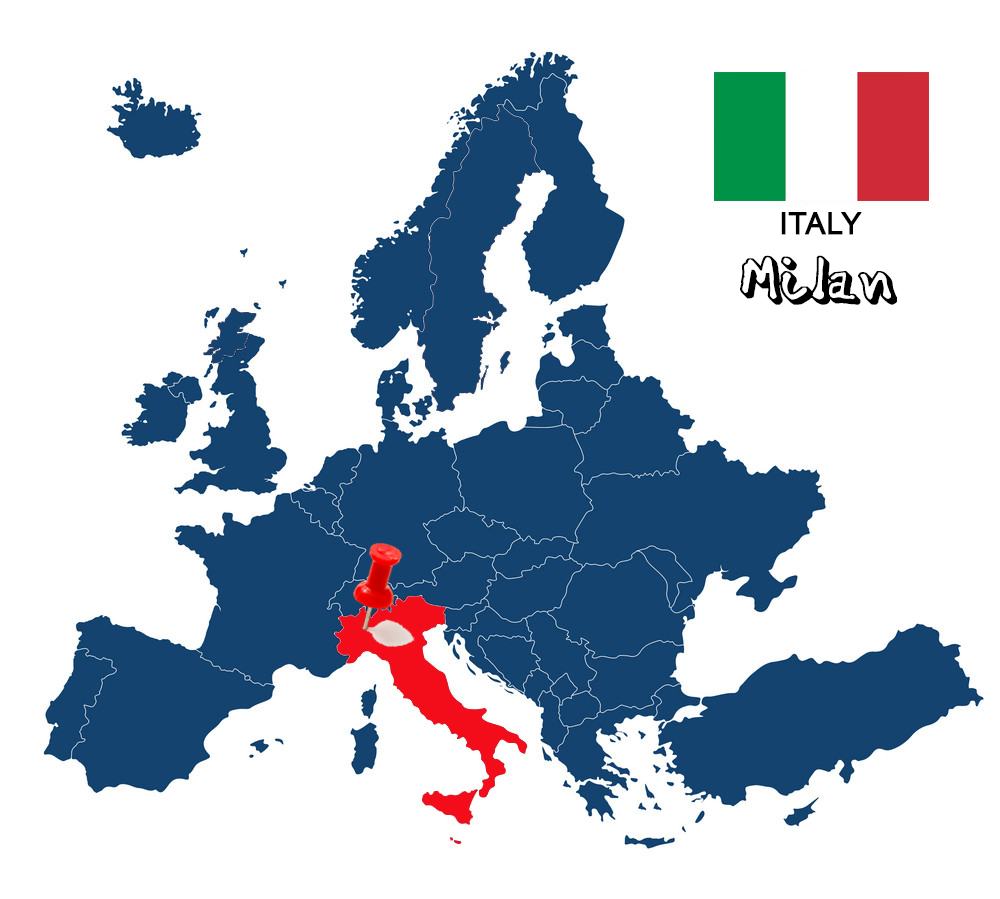
There is a prejudice that in Milan there is nothing to see beyond the Duomo and that you only go for shopping. But that's rumors. Certainly Milan cannot be compared to Rome or Florence, both in beauty and history. Of course, it hides many hidden treasures waiting to be discovered, while it is the ideal starting point if you want to wander around northern Italy and the French Riviera.
A few words about the city
Milan is located in northern Italy and is the capital of the Lombardy region. It is the second most populous city of the country after Rome, with the population in the wider area reaching 7,400,000 inhabitants. When we talk about style, Milan is the first one that comes to mind, and not unjustly, since it is considered by many the Metropolis of Fashion. The economic importance of the city, which has become an industrial and commercial center since 1870, is enormous, if you consider that businesses domiciled there, employed over 650,000 workers. Of course Milan is not only fashion and shopping, since in the city there are many attractions and museums, as well as one of the most famous operas of the world, La Scala. So I have chosen for you what I think is worthy of attention for someone who is visiting the city for the first time.
Duomo
The Cathedral of Milan (Duomo) is the fourth largest in the world, the seat of the archbishop and the central meeting point for locals and tourists. Built in a strictly Gothic style, it took more than five centuries to complete. This is the "attraction" of the city, as many visit Milan only to admire the enormous and famous Duomo. Its importance in the city's affairs is illustrated by the fact that the majority of the streets of downtown Milan, either start from this point or encircle it. In my opinion this particular temple is like being "ripped apart" from somewhere else and moved to Milan, since the whole aura that exudes is not consistent with the rest of the city. But that may be the fact that makes it so appealing to the eye. The interior of the church is extremely impressive and richly decorated with elaborate stained glass, detailed frescoes, beautifully carved statues with the most remarkable, the huge gold statue of Our Lady in the background. The entrance to the interior of the temple costs just 3e and tickets are sold at the Duomo Museum, just across the street. Of course, you can climb to the top (paying 9e if you choose the stairs and 13e the elevator) to admire the amazing details of each column and the panoramic view of the city from above.
Galleria Vittorio Emanuele II
Right next to the Cathedral you will find the impressive Galleria Vittorio Emmanuelle II. This is an impressive indoor market, which is built in the shape of a cross and has a four-story double arcade with a glass roof! Its name naturally comes from the first king of Italy and it is considered one of the oldest shopping centers in the world! The market was designed in 1861 and built by the architect Giuseppe Mengoni between 1865 and 1877. Interestingly, it is also home to Prada's mother store, which has been in the market since 1913! It is also home to the biggest clothing houses such as Armani, Gucci, Chanel, Louis Vuitton, Dior, as well as galleries, restaurants and bars. Finally, the central entrance to the market is considered the majestic gate in front of Duomo Square.
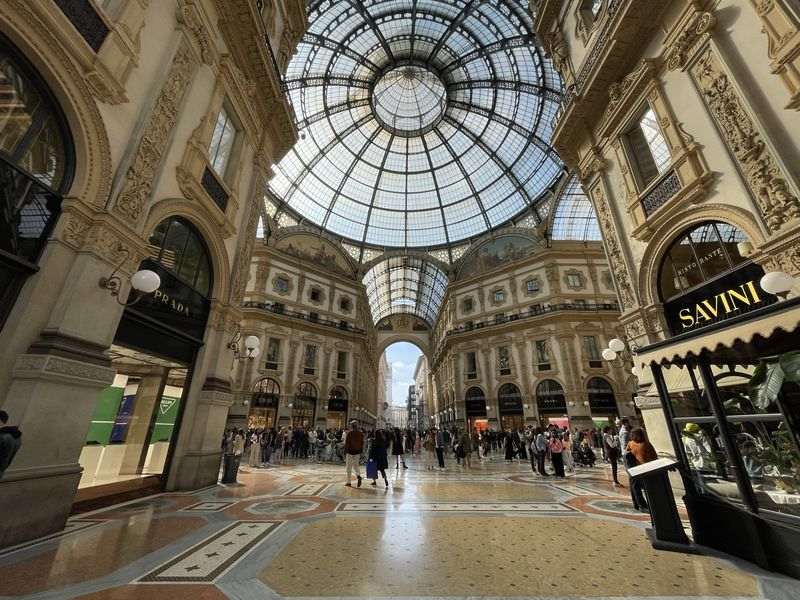
Castello Sforzesco
From Milan could not be missing a castle and this is none other than the castle of Sforza (Castello Sforzesco). A powerful family, which was extremely popular in the 15th century, consisting of Dukes and royalty. Today the castle is a complex of art galleries and exhibits, since inside there are not one or two, but nine museums! With just 5e euro you will have access to the whole museums, hosting among others, some great exhibits of Leonardo da Vinci, Michelangelo and Andrea Mantegna. Take a lot of time of your schedule, as it is estimated that it takes many hours to explore the entire castle, both internally and externally.
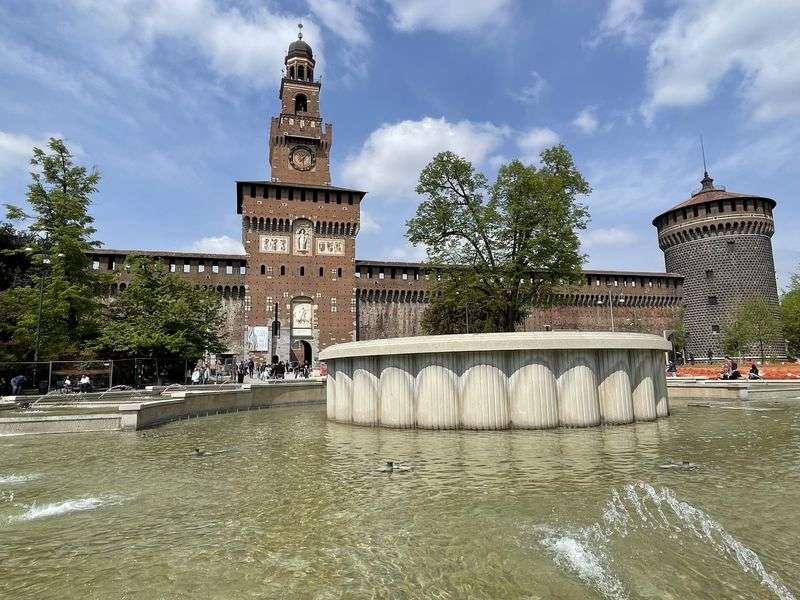
Parco Sempione
Behind the castle, stretches the largest green space in the city, the Sempione Park (Parco Sempione). It was built between 1890 and 1893 in imitation of a typical English garden and has a total area of over 95 acres! There you will find countless trees, shrubs and flowers scattered among the many vibrant green lawns and a beautiful man-made lake, which is home to many species of birds. Also, in this particular park there are several attractions that will pique your interest. The most important of these is, of course, the impressive Arch of Peace (Arco della Pace), which was originally built in 1807 to commemorate Napoleon's victories! But when Milan was conquered by the Austrian Empire, construction was halted for a few years and completed in 1838 to celebrate Italian unification. Finally, worth mentioning is the Triennale (La Triennale), which promotes fine arts and Italian avant-garde architecture, the Municipal Aquarium (Acquario Civico), built for the exhibition of 1906 and has thirty-six tanks with over a hundred different species and the Municipal Arena (Arena Civica), which was inaugurated in 1806 in the presence of Napoleon and today is used for concerts and various events.
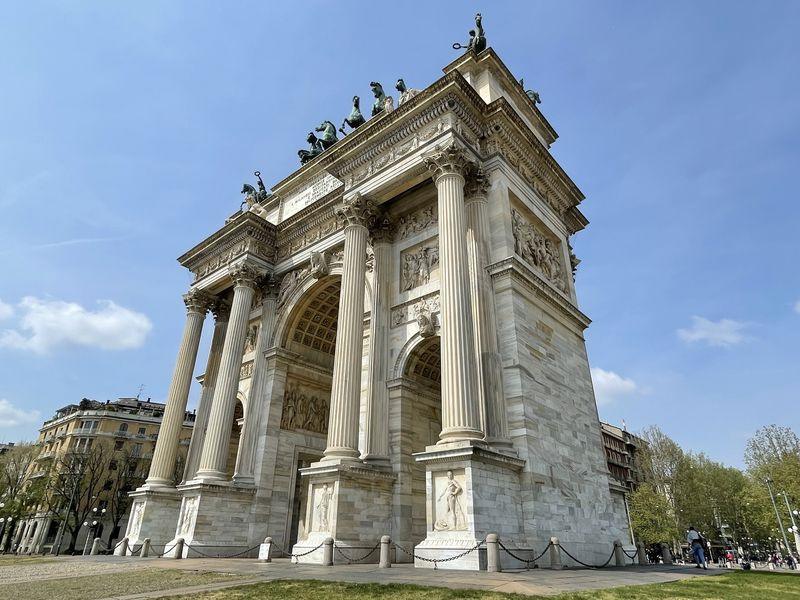
Santa Maria delle Grazie
The church dedicated to the Virgin Mary, Santa Maria delle Grazie is home to one of the most famous frescoes in the Catholic world, Leonardo Da Vinci's Last Supper! This particular creation is linked to many myths and stories and represents Jesus Christ announcing to his disciples that one of them will betray him. Unfortunately, this particular masterpiece is in a bad condition, not because of time, but mainly because its creator decided to work on fresh wall. This resulted in the Last Supper showing signs of wear and tear before it were even completed. Interestingly, Da Vinci's biographer Giorgio Vasari described the painting as a "ruin" as, according to him, the figures were already difficult to see. Nevertheless, the importance of the mural is indisputable, as a result of which it receives thousands of visitors every day. This forced the authorities to have a strict limit on visitors inside the room, with a time limit of just 15 minutes. Due to this limit, it may be difficult to find tickets, so be sure to book them online to avoid a surprise at the box office.
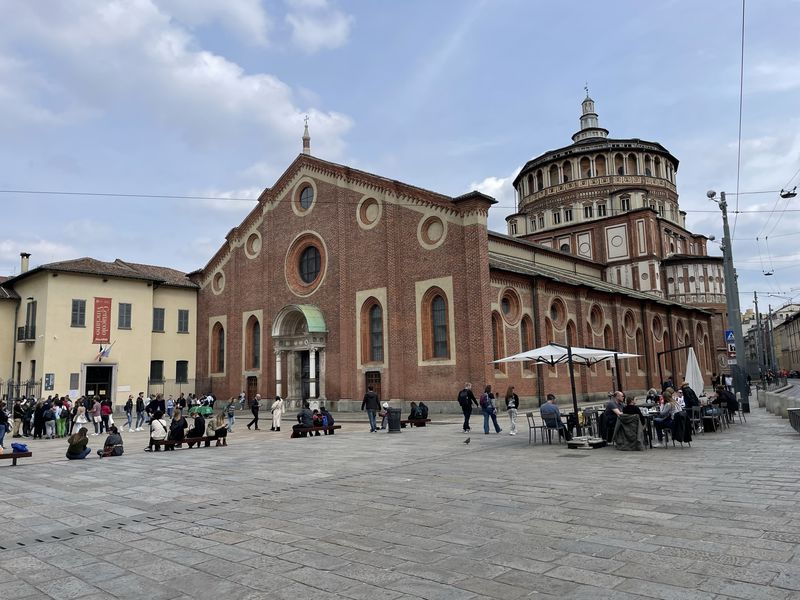
Chiesa di San Maurizio al Monastero Maggiore
A few meters away, you will find a beautiful and unique sight, the Church of Saint Maurizio in the Great Monastery (Chiesa di San Maurizio al Monastero Maggiore). This church was built in 1518 and was initially united with the adjacent Benedictine nunnery, which today houses the Municipal Archaeological Museum (Museo Civico Archeologico). It is full of frescoes from all moments and phases of Christianity, such as Noah's Ark, the Ten Commandments to Moses, the birth and crucifixion of Christ, etc., while, of course, the entrance is free! Today the church is used every Sunday from October to June following the Byzantine Rite, in Greek (!).
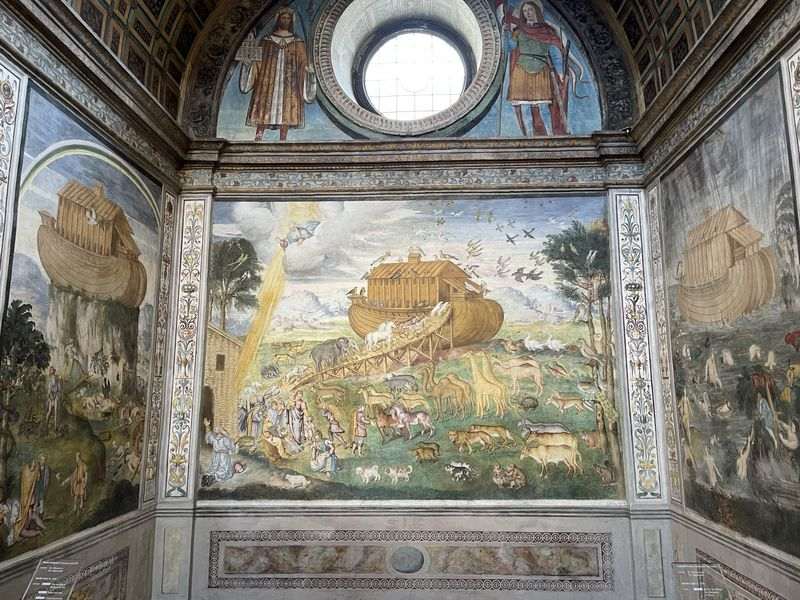
Pinacoteca di Brera
The Brera Art Gallery (Pinacoteca di Brera) will neither be the biggest nor the most impressive art gallery you will come across in your life. But the only thing for sure is that it will impress you, as it is located in a beautiful and atmospheric district, full of perfume shops, cafes, restaurants and shops, which will make you forget that you are in Milan. It is housed in the homonymous palace (Palazzo Brera), to which it also owes its name, and dates back to 1776. There you will admire important collections of paintings, some of the Italian "Holy Monsters" of painting, such as Caravaggio, Raphael, Mantegna, Hayez, Rembrandt and Tintoretto. Furthermore, the ground floor houses the School of Fine Arts (Accademia di Belle Arti di Brera), the Municipal Library (Biblioteca Nazionale Braidense di Brera), as well as the observatory (Osservatorio Astronomico di Brera), while finally it is decorated with dozens of ancient statues Greek personalities. The entrance costs 10e if you are a resident of a European country and under 30 years old, while for the rest the price is 15e.
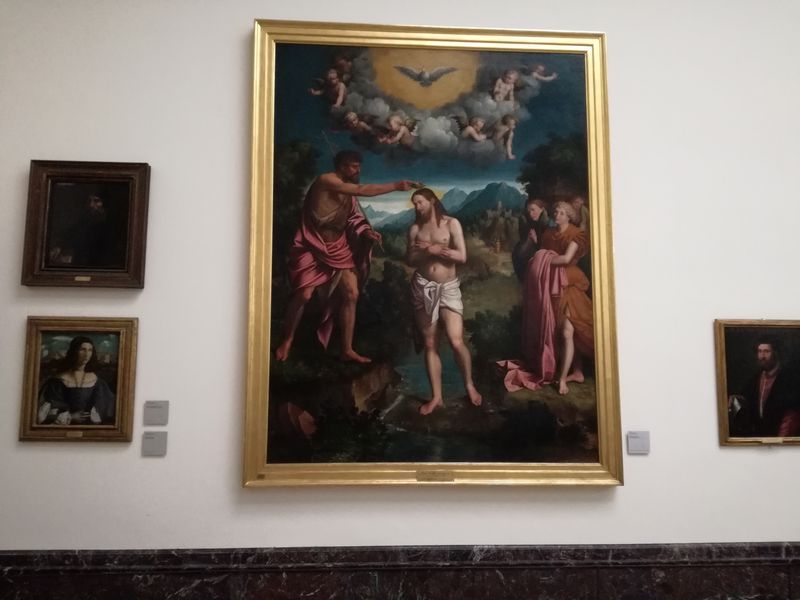
Biblioteca & Pinacoteca Ambrosiana
The Ambrosian Library (Biblioteca Ambrosiana) is a highly historical library and one of the greatest centers of European culture. Of course, it is dedicated to the patron saint of the city, Saint Ambrose, and it is said that it delighted Lord Byron with its wealth! It is famous for its vast collection of manuscripts and drawings by Leonardo Da Vinci. Among them the famous Atlantic codex (Codex Atlanticus), with notes and drafts of the versatile Renaissance scientist, covering everything from mathematics and astronomy to paragliding. It also has an excellent Art Gallery (Pinacoteca Ambrosiana) with works by Caravaggio, Raphael, Titian, Tiepolo, while in the same place you can admire the Crypt of the Holy Sepulcher (Cripta del Santo Sepulcro), which is one of the oldest underground churches in Milan! Single entry to all of the above costs 20e, and you can also buy individual tickets.
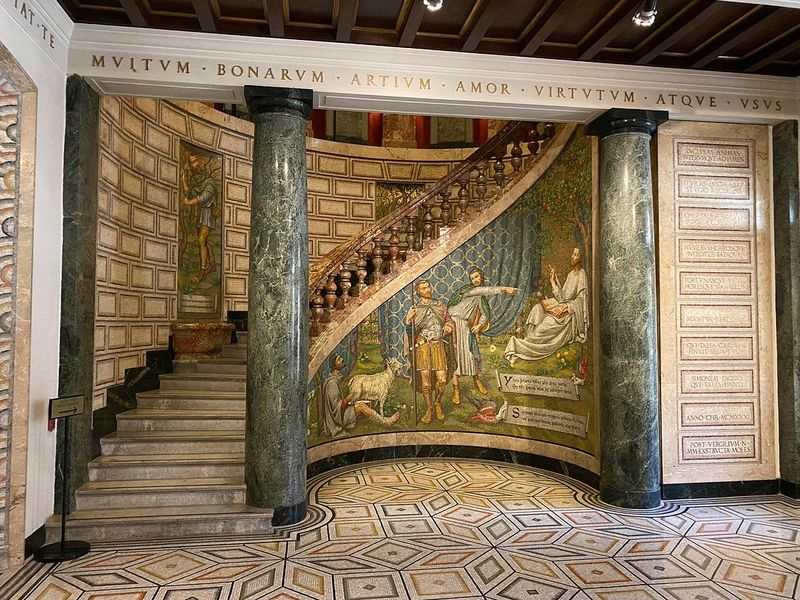
Teatro alla Scala
If the city is proud of one thing, this is definitely the famous Opera of Milan (Teatro alla Scala). It is a symbol of national pride for Italians, as some of the greatest names of the world's opera scene have sung in this particular concert hall! The truth is that it does not radiate grandeur from the outside, as the building is neither very large nor particularly impressively decorated. But inside it has a huge dance floor, with 2030 spectator seats and one of the best acoustics in the world. If you're lucky and a show is on during your visit, don't miss the opportunity to watch it. The cheapest tickets are priced at 30 to 50e depending on the popularity of the show. If there is no any performance, you can enter the theater through a visit to the Museum of the Opera (Museo Teatrale alla Scala), where, among other things, you will enjoy a rich collection of costumes and musical instruments. Entrance costs 12e.
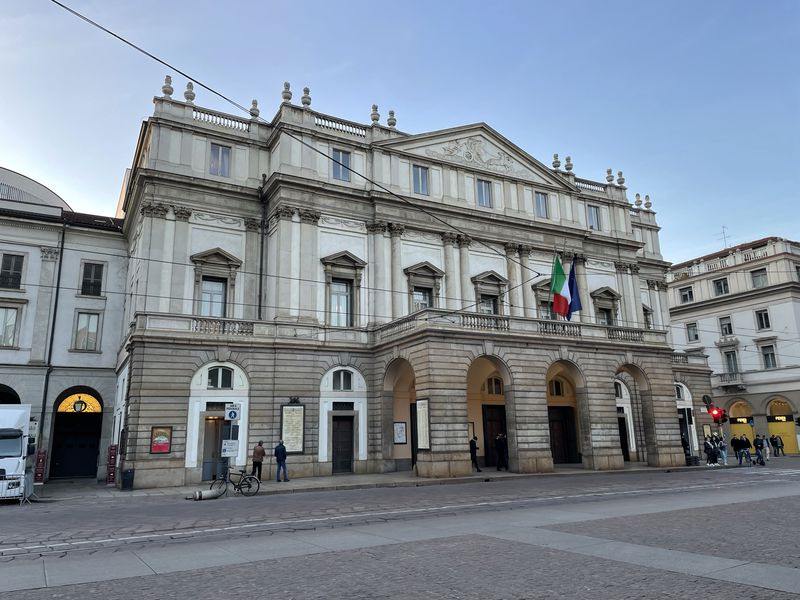
Navigli
One of the most beautiful parts of Milan is undoubtedly the canal district (Navigli). They certainly can't compare to those of Venice in size, but they are just as charming and have created an alternative attraction in the southern part of the city. They are considered the oldest technical canals in Europe and were built to connect Milan with Lake Maggiore(Lago Maggiore), Lake Como (Lago di Como) and the city of Pavia. These are basically large waterways, which were used to transport products and irrigate the fields. Today, it is the right place to get away from the hustle and bustle of the big city and get to know a different Milan within Milan itself. The most famous street in the area is Corso di Porta Ticinese, along which you can find cheap cafes and restaurants, bohemian bars, boutiques, picturesque houses with large yards and buildings full of interesting graffiti. If the weather permits, you should not miss the ride by bike or on foot, along the Grand Canal (Grande Naviglio), where the heart of Lombardy at night beats.
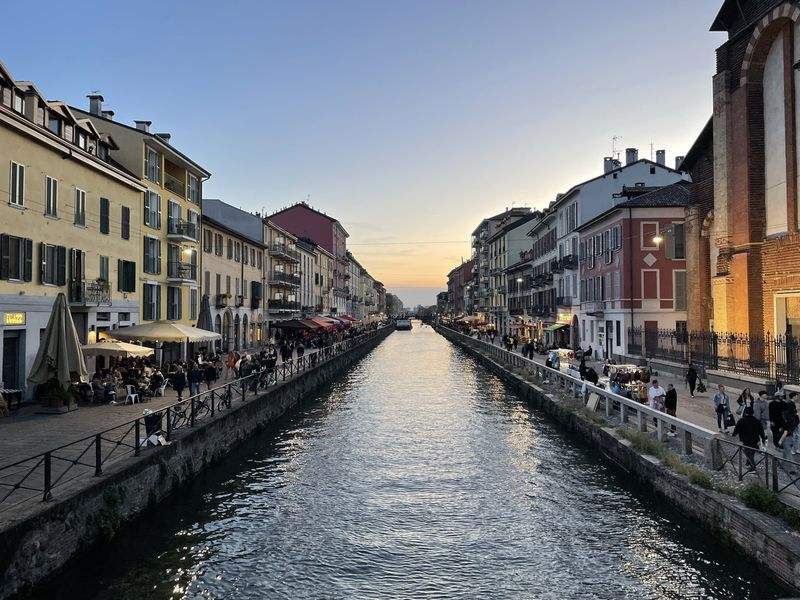
Cimitero Monumentale
The monumental Cemetery (Cimitero Monumentale) has nothing to do with the cemeteries you have in mind. It is essentially an open museum, which you don't even have to pay for. It is the largest cemetery in the city and stands out due to its abundance of artistic tombs and monuments. Designed by the architect Carlo Maciachini (1818-1899) and officially opened in 1866, it has since been filled with a wide range of contemporary and classical Italian sculptures. Also noteworthy are the Greek temples, elaborate obelisks and other original works, such as a stepped version of Trajan's Column. The monumental Cemetery is the final resting place for many great personalities, such as Evita Peron, the pianist Vladimir Horowitz, the maestro Arturo Toscanini, the Nobel laureate writer Salvatore Quasimodo, etc.. Near the entrance there is a permanent exhibition of prints, photographs and maps, which describe the historical development of the cemetery. Finally, it includes two electric accumulators, which are battery operated and were built in the 1920s!
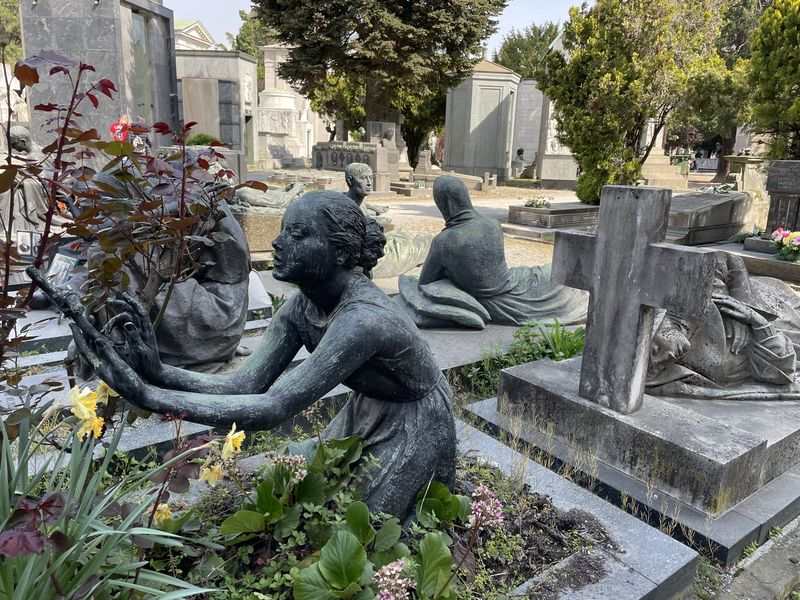
Bosco Verticale
Last but not least, I left a special part of Milan that you should not miss. The Vertical Forest (Bosco Verticale) is an ambitious project to create sustainable housing. It is a metropolitan reforestation project, which contributes to the regeneration of the environment and urban biodiversity, without this entailing the expansion of the city into the suburbs. Essentially, it is a model of vertical densification of nature within the city, operating in relation to policies of reforestation and naturalization of large urban and metropolitan borders. The first example of the Vertical Forest, which consists of two residential towers 110 and 76 meters high, is located on the edge of the Isola neighborhood. It hosts 900 trees (each measuring 3, 6 or 9 meters high) and over 2000 plants, from a wide range of shrubs and flowers distributed in relation to the position of the facade towards the sun. On level ground, each vertical forest equals, in quantity of trees, an area equal to 7000 m2 of forest!
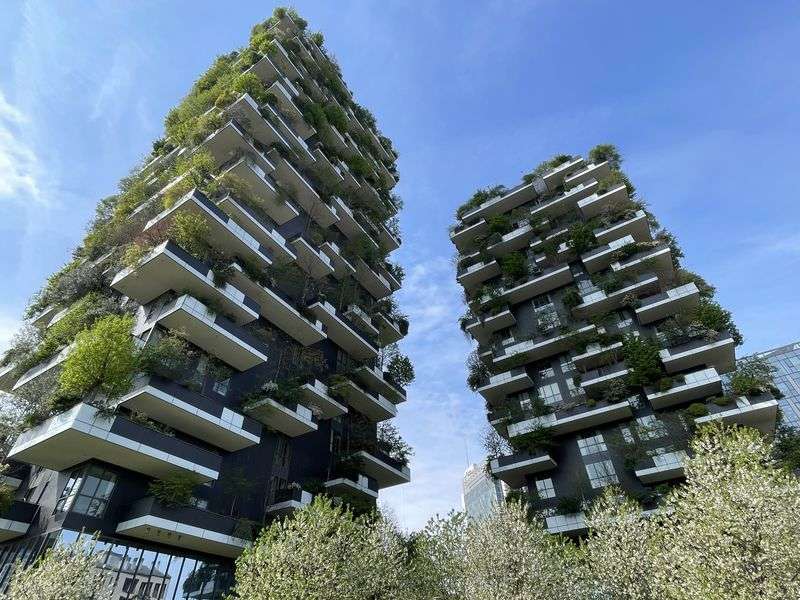
How to go
In Milan there are two airports, Malpensa, which is the city's largest, and Linate, which is the one closest to the center. Of course, the city is also served by the airport, located in the neighboring city of Bergamo. As you can easily see, the options for going to Milan are varied! The most economical option comes from Ryanair (Bergamo airport), which with proper planning can find tickets starting from €48 (!) round trip. Also, if you want a more comfortable flight, you can choose Aegean (Malpensa Airport) which offers flights from €120 round trip.
Where to stay
Milan is a very big city, which means a lot of accommodation. I won't hide it from you though, that the prices in most hotels or houses are particularly high, especially if you are looking for something towards the city center. So my suggestion is to avoid the area around the Cathedral, which is very touristy and overpriced, and look for something outside of it. So my first suggestion is a "special" apartment, decorated in an American style, located in a beautiful neighborhood, next to a metro stop and only five minutes from the heart of the city. If, on the other hand, you have an early morning flight from Malpensa Airport, then the best choice is the Idea Hotel Milano Malpensa Airport.
How to move
I think the only means of transportation you will need to use is the subway. The trains are relatively new and there are routes every three minutes. Certainly one of the four lines of the Milan underground will quickly and economically get you where you want to be. A more "vintage" way to get around the city is the wooden tram, in the traditional yellow or orange color, which will take you (literally and metaphorically) on a route from Stazione Centrale to Arco Arcade (Arco della Pace), creating an experience straight out of another era. Finally, taxis except for the fact that are expensive, is almost impossible to locate and stop freely one in the city, so it is a good idea to find a plate or phone to call one.
What to eat
In addition to classic pasta, pizzas and ice creams, going to Milan, you should try some of the trademarked dishes. One of them is the risotto alla Milanese (arborio rice cooked in wine, saffron and beef medallion), and also don't miss the cotoletta alla Milanese (breaded beef steak in the pan). Milan is also famous for panzerotti, a kind of calzone in the oven, which changes its name depending on the filling and the region where it comes from. You'll find the best in Luini. Finally, due to its geographical location, the capital of Lombardy has a wide variety of cheeses and salami, most famous of which is gorgonzola, named after a nearby town. The Trattoria Il Cormorano is a good restaurant, preferred mainly by the locals and its tastes will delight you. There you will be able to taste both the Milanese cuisine and all the traditional Italian dishes. Finally, for coffee I recommend Starbucks Reserve Roastery, which is one of the most beautiful in the world, for cocktails with a view of the Cathedral Terazza Aperol and for gelato Cioccolati Italiani and Artico Gelateria Tradizionale.
Useful information

In Italy we travel with a passport or a new type of Police Identity Card, where the information is written in Latin characters.
In Milan the language used is, of course, Italian. But most, if not all, speak English, so ask for clarifications in English.
The currency of the country is the euro.
Milan is an hour behind Greece (GMT +2).
The Greek Wage Consulate General in Milan is located at Foro Buonaparte Street, 48, 20121 and its phone number is +39 02 8050 0559.
The passage to and from Milan's airports is simple, as there are regular train and bus services, which take you to the city's main train station.
Italy's climate is quite similar to that of Greece, so there are mild winters and hot summers. Ideal time of visit I think it is Fall or Spring.
Recommended excursions → Lake Como, Genoa, Turin, Verona

If this article seemed interesting or contributed to your quality information, then you can like my facebook page: o_thessalonikios or follow me on instagram!
Mouzakidis Pantelis
